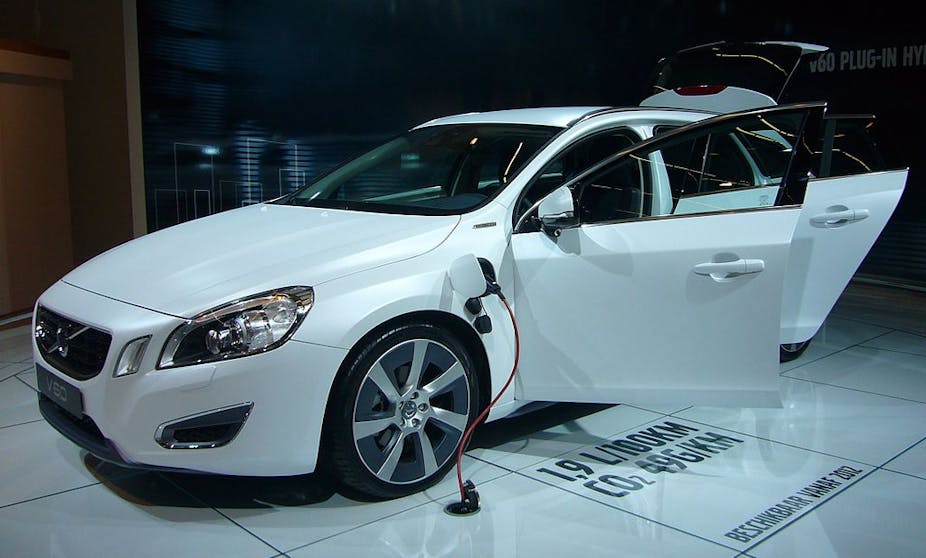Electric vehicles (EVs) are not new. But recent developments could give them something of a boost in the eyes of the buying public. If so, it wouldn’t be the first time.
By the turn of the 20th century, EVs were so popular in America that they outsold all other types of cars.
The Baker Motor Vehicle Company of Cleveland, Ohio lead the EV industry by offering 15 different models, with production reaching 400 cars in 1905 (increasing to 800 in 1906) and selling for approximately US$850 each – about US$22,400 in modern money.
Famous owners of the Baker EV included Thomas Edison, the King of Siam and the famous American financier and philanthropist “Diamond” Jim Brady.

There was a perception by the 1900s that EVs had many advantages over their gasoline-powered rivals: they were silent, free from vibration, easy to start and produced less emissions.
But, as with today, buyers had similar concerns about their short driving range (a condition known as range anxiety) and high initial price.
In time their popularity waned.
Second coming
EVs attained prominence again at the beginning of the 1970s due to the oil crisis, when the members of Organisation of Arab Petroleum Exporting Countries, or the OAPEC (consisting of the Arab members of OPEC, plus Egypt, Syria and Tunisia) proclaimed an oil embargo on other nations. When this crisis passed and oil prices began to fall, the interest in EVs once again waned.
But despite the public’s seemingly unbreakable love affair with the combustion engine over much of the past century, the EV as a viable transport alternative is experiencing a minor resurgence.

Once again, the flames are being fanned by factors external to the industry: our focus on climate change, renewable energy and global resource shortages.
The big difference, when compared with previous affairs, is the considerable advancement in battery technologies, in part due to mass production in other sectors.
Third time lucky?
One big, and not-often-thought-about problem that must be resolved before EVs can begin to be sold in larger numbers is the issue of “standardisation” – simply, the process of developing and implementing agreed-upon technical standards that become the established norm across the EV industry.

Last month, the peak non-government standards body in Australia, Standards Australia, announced the technical committee responsible for developing new Australian EV standards had issued guidance on key definitions for the EV industry.

Such terminology, said the body’s chief executive officer Colin Blair, was a welcome step towards developing a suite of electric vehicle standards that would underpin EV industry growth in Australia.
For sure, the new documentation will provide a valuable guide for component and system developers.
The announcement by Standards Australia follows an extensive scoping study by the same body into EV standards, released in May 2009, and a further report detailing a “standards workplan” for the development of EV standards in Australia in 2010. Both of these were commissioned by Victoria’s Department of Innovation, Industry and Regional Development.
Standards, IP and EVs
A standard-setting development process can involve complex negotiations, not only over the most appropriate standard to adopt, but also regarding the underlying intellectual property (IP) rights and licensing terms of contributors to that standard – through patents, for instance.

Such a process can generate anti-competitive as well as pro-competitive effects. Significantly, anti-competitive behaviour may arise where one or a group of producers participating in the development of a formal standard set out individually or collaboratively to implement standards that incorporate technologies to which they hold exclusive IP rights, creating a patent “hold-up”.
As already mentioned, the public has traditionally faced two main hurdles to buying EVs: the initial cost of ownership and their shorter driving abilities.
A 2009 report prepared for the NSW Department of Environment and Climate Change, highlighted that such concerns are “expected to converge over time as technology improves and production increases”.

In any case, contributors to the development of EV standards and standard-setting organisations (SSOs) have an opportunity to transform the EV landscape by driving innovation in the automotive industry.
If the respective governments and EV stakeholders don’t seize this opportunity and learn from history, we will see yet another missed opportunity and yet another loss of optimism that can be traced back through the “automotive century”.

